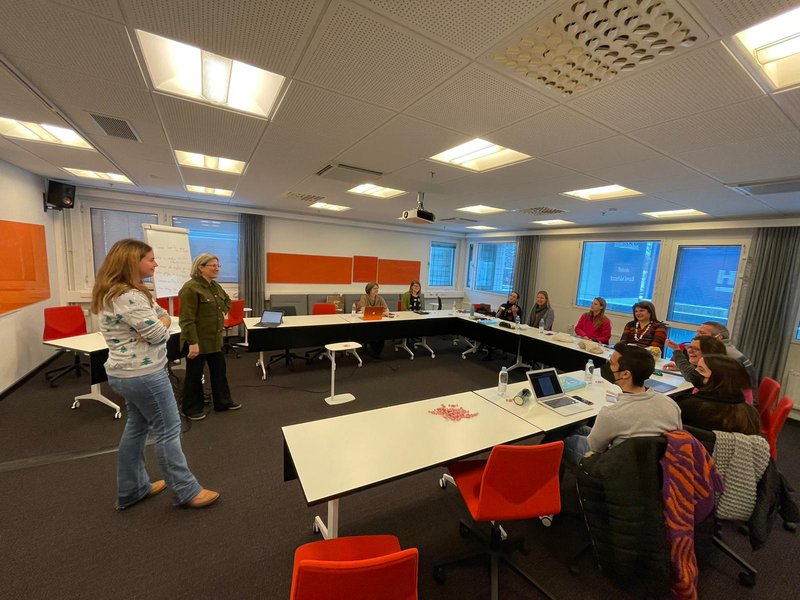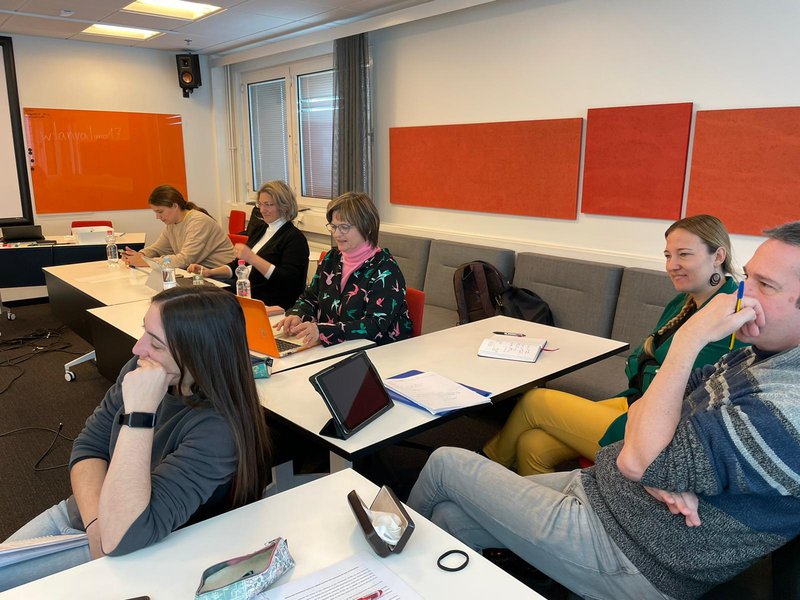Teaching Teachers to Use Debate in the Classroom: debate can be used when adapted to the needs of the lesson and the time given for the lesson.
Lissy Clement
From March 8th to the 12th, 2022 the 2nd Learning Teacher Training Mobility took place in Helsinki, Finland at the English School. The participants included the Italian, Slovenian and Spanish delegation, as well as the Finnish delegation, which was the hosting country.

During those days we had workshops during which we shared experiences with using debate in the classroom with the help of our excellent trainer Nusa Stamejcic.
The first two days we especially focussed on using debate in the classroom. First of all, we discussed how it is important to overcome the traditional teaching methods in the classroom by trying out debate-centred activities which we know promote reflection, self-confidence, the ability to conduct research and many other positive skills in students.
We identified the problems we traditionally encounter when thinking about whether or not to use debate in the classroom: too shy students, not enough time to do a full-fledged debate in a lesson, and too many students in a classroom. All these were among the reasons a teacher typically resists using debate in the classroom.

As we discussed these issues, we realised that indeed these are not necessarily obstacles and that debate can be used when adapted to the needs of the lesson and the time given for the lesson.
Next we focused on motions. We discussed how to test our own motions to see if they are doable as opposed to finding prefabricated motions that perhaps do not have anything to do with our classwork. We discovered that the best motions to use are the ones that are current in our own culture and broad enough to discuss, ones that the students can relate to, and ones that, most importantly, go with the topic we are teaching in the lesson, whether it be mathematics or literature. Each motion should be tested by the teacher to see if it is possible to find two or three arguments for both proposition and opposition.
During the second day we continued to work on the topic of motions by looking at definitions and coming up with arguments. We used the following motion in order to do so: “It is legitimate to act violently against large polluting projects in favour of the environment.” Nusa explained the concept of stakeholder arguments to us in order to demonstrate how to come up with good arguments. In groups we teachers provided arguments as if we were students in our very own classrooms. This was very beneficial as we were able to see the activity from the perspective of the students.
All in all the discussions and activities on debate motions was an excellent way to see how we, as teachers, can use this in the classroom to the benefit of the students.
